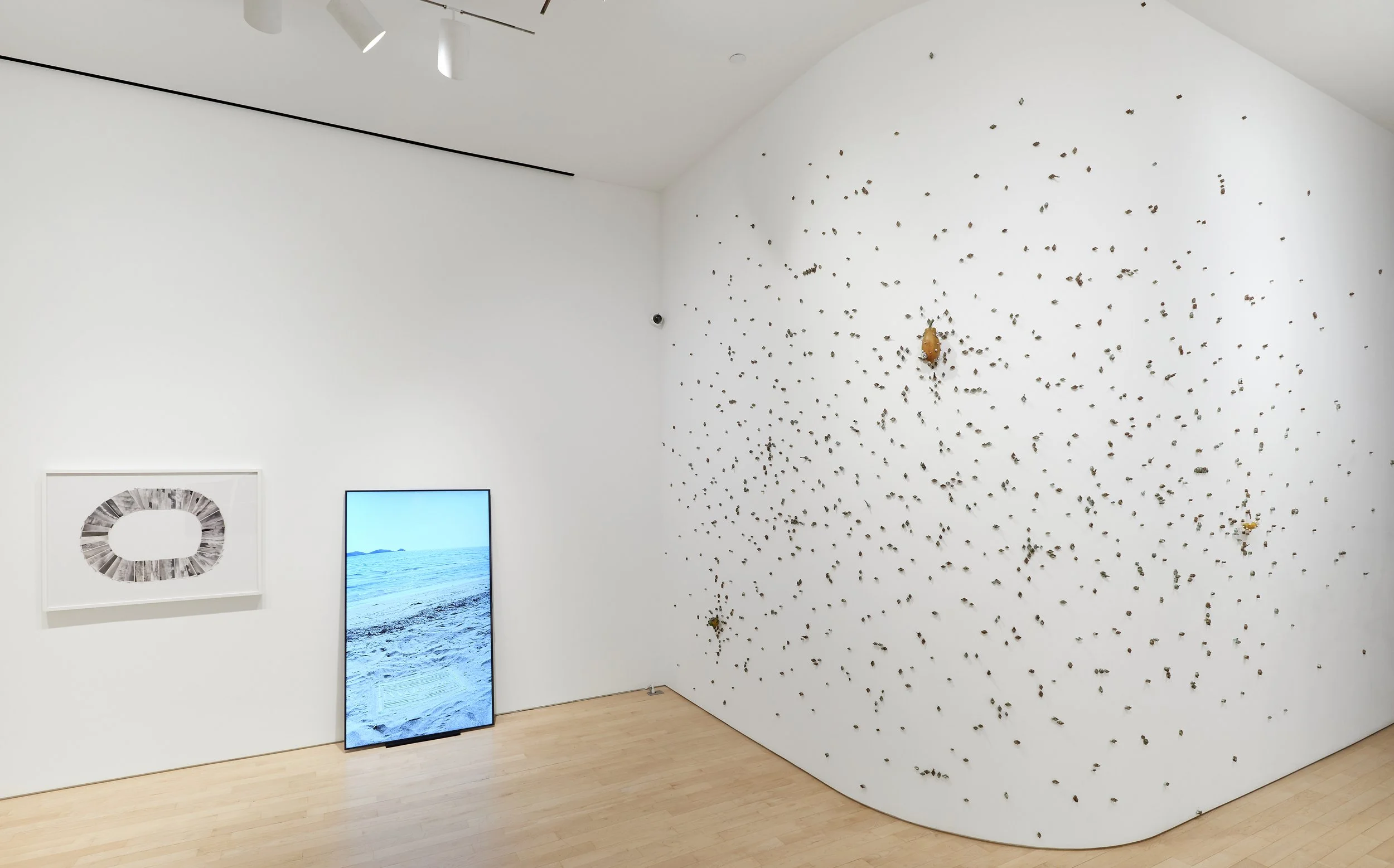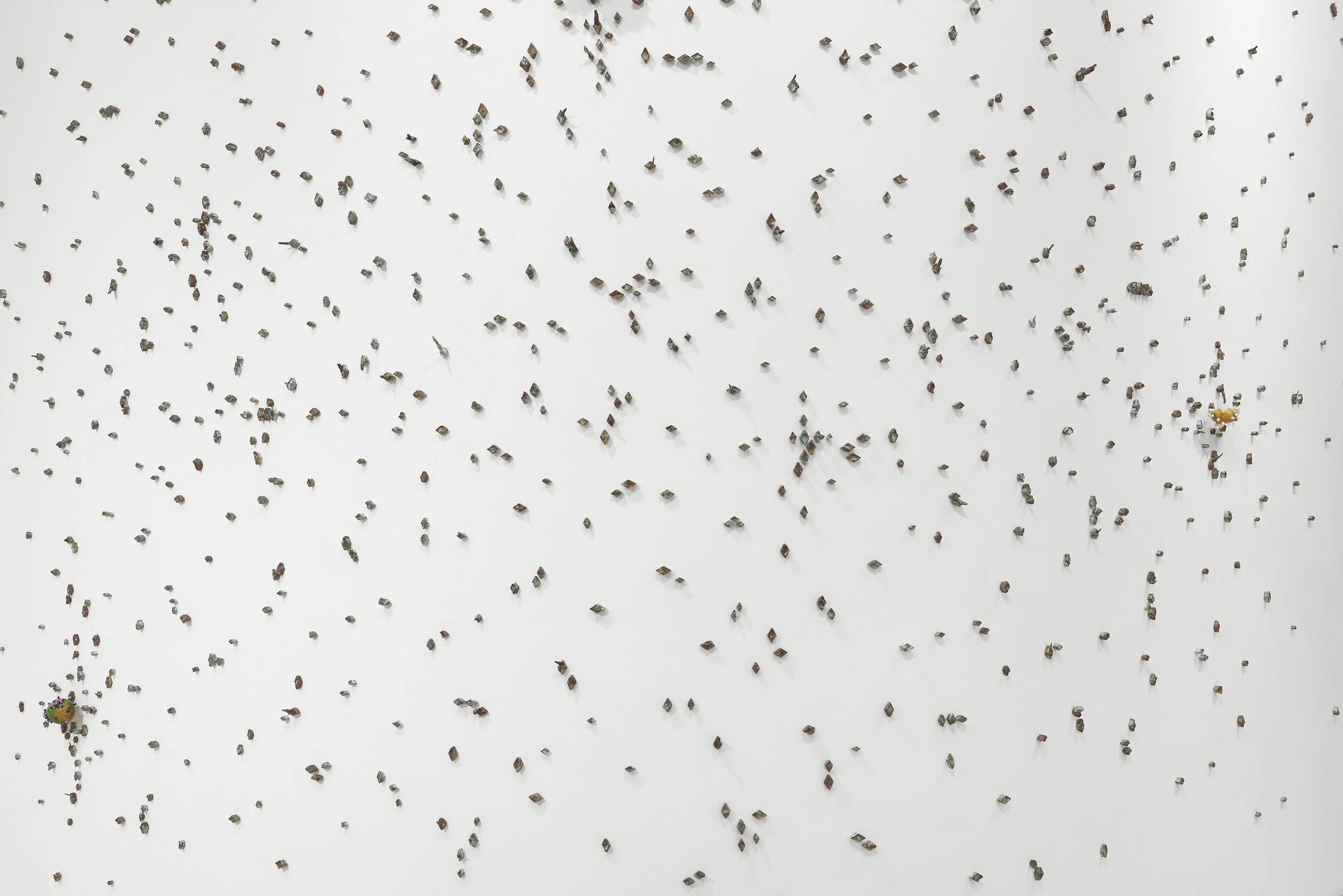23 June - 29 July 2023. Island Time.
Jane Lombard Gallery, New York, USA.
Courtesy of the artist and Jane Lombard Gallery. Photo credit: Arturo Sanchez.
An exhibition of artists living and working in the Philippines, curated by James Clar
Featuring a wide range of practices, Island Time explores the subjective notion of time and its social, cultural, and
historical fluidity from the lens of emerging and mid-career artists living and working in the Philippines. Island Time will
include work by Poklong Anading, Miguel Aquilizan, Leslie De Chavez, Corinne De San Jose, Kiko Escora, Gregory
Halili, KoloWn, Christina Lopez, Gary-Ross Pastrana, Luis Antonio Santos, Shireen Seno, and Derek Tumala.
Techno-Orientalism: Imagining Asia in Speculative Fiction, History, and Media offers a theoretical foundation for Island
Time’s central premise. Described as a concept that “...symmetrically and yet contradictorily...defines a modern West by
producing an oppositional and premodern East,” techno-Orientalism refers to “a collusive, futurized Asia” that “further
affirm[s] the West’s centrality.”1 Othering, in this framework, has served to bolster the Western position of technological
and cultural superiority, while justifying the acts of dehumanization that underpin this carefully constructed hierarchy.
From this lens, however, artists who have been subjected to the techno-Orientalist gaze have creatively subverted the
dynamic to their own aims. The exhibition’s title reclaims the term from its derogatory origins, often used to denote a
1 David S. Roh, ed., Techno-Orientalism: Imagining Asia in Speculative Fiction, History, and Media (New Brunswick, New
Jersey: Rutgers University Press, 2015), 7. disordered, non-rigorous, non-Western environment that runs on its own mechanisms and systems. In an act of defiant decoloniality, such alternative temporalities are embraced by the selected artists as spaces to exist outside of Western hegemony. Within the psychological, conceptual, and communal realm of “island time,” Clar has curated a meaningful exchange between diverse artists at the leading edge of contemporary art in the Philippines, many of whom will be
showing their work in New York for the first time.
The subjective and subversive aspects of time anchor the breadth of mediums and methods employed by the artists, as
does their shared context of making work in the Philippines. Despite this throughline, the resounding commonality is, in
fact, the lack thereof; multihyphenate, category-defying work like that shown in Island Time emerges from a place of
complex identity, itself the result of hundreds of years of disparate histories, distinct cultural indigeneity, colonization
from multiple countries, and postcolonial nationhood. Further complicating the notion of identity, many of the artists
selected by Clar, and Clar himself, operate as “specular border intellectuals,” or what Abdul JanMohamed describes as
“one who is ‘familiar with two cultures, [and] finds himself or herself unable or unwilling to be “at home” in these
societies.’”2 The liminal space such artists inhabit is closely tied to their expansive understanding of time, and the
flexibility with which they can interpret and manipulate time as an artistic medium.
For example, Poklong Anading’s 60-minute video installation of the sunset and sunrise, recorded from his studio
window, takes a literal approach to temporal ambiguity. Recordings of recordings of the magic hours of dusk and dawn,
played on a monitor in the same window of his studio, create a layered, recursive moving image work in which reality is
altered, and time is abstracted. Elsewhere in the exhibition, Gregory Halili combines different dimensions of biological
and geological time in his work, using volcanic ash from the eruption of Mount Taal within his drawings of skulls on
locally-sourced mother of pearl shells.
In Corinne De San Jose’s cyanotypes of slides from decomposing film reels, time is both an active agent of decay and
a passive testament to the gaps in the archival record. The fragmented “media memory” of the Philippines complicates
the passage of time and its collective perception, as looking to the future often assumes a stable version of the past.
Also referencing the history of photography, Gary-Ross Pastrana explores the anachronistic nature of Philippine identity
and experience in “COIN,” a deconstructed photograph made of filed-down silver from a USA Silver Peso Dollar that was
distributed during the U.S. occupation of the Philippines; the work recalls the recent history of American colonization, as
well as the silver-gelatin photographic process.
Other artists respond to the lasting effects of colonization as felt in present-day plights like political corruption, climate
change, poverty, and the exploitative economy of foreign tourism. Reflecting upon the legacy of Christian missionaries in
the Philippines, Derek Tumala created his work at the Manila Observatory, originally founded by Jesuit priests, adding a
layer of religious context to the exhibition, while Miguel Aquilizan’s work introduces an environmental angle, dealing with
the spread of Mahogany trees, an invasive species that creates agricultural dead zones in the forests.
With a seemingly innocuous title, Island Time challenges public expectations for a summer group exhibition, provoking
viewers to confront the elements of history and identity that run counter to their preconceived notions of the islands and
the people who call them home.






